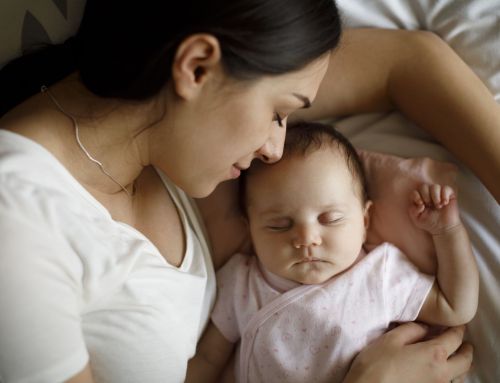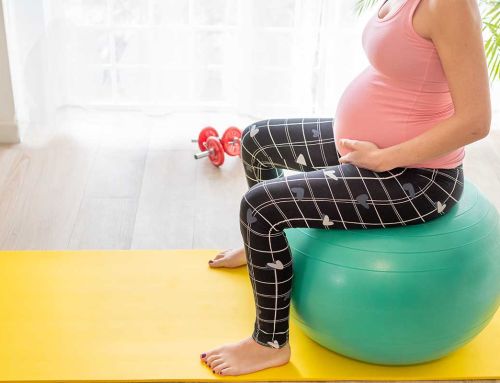Experiencing leg pain after pregnancy is a common concern for many new mothers.
As the body recovers and adjusts to life postpartum, various changes can lead to leg discomfort.
Potential causes of leg pain following pregnancy range from hormonal shifts and blood circulation changes to the physical stress of carrying and delivering a baby.
The journey of motherhood doesn’t end at childbirth; it continues well into the postpartum period, often bringing a series of physical discomforts, including leg pain.
However, post-pregnancy leg pain is a common phenomenon, with several factors contributing to it.
Understanding these factors is crucial in effectively addressing and alleviating the pain, ensuring a more comfortable and healthier recovery period for new mums.
Causes of Leg Pain After Pregnancy

Fluid Retention and Circulation Changes
During pregnancy, the body produces more fluid and blood to support the growing fetus, leading to fluid retention and swelling (edema).
The body works to eliminate this excess fluid post-delivery, but this process can temporarily impact circulation, causing leg pain or cramps.
Hormonal Adjustments
Pregnancy hormones that relax ligaments and joints do not immediately return to pre-pregnancy levels.
Delay can result in joint instability and pain, often affecting the legs.
Weight and Posture Changes
After childbirth, the body adapts to losing the baby’s weight, placenta, and amniotic fluid.
Adjusting back to the pre-pregnancy centre of gravity can strain leg muscles and joints, contributing to discomfort.
Nutritional Deficiencies
Postpartum women may experience deficiencies in essential minerals like calcium and magnesium, which are crucial for muscle health. Such deficiencies can contribute to leg cramps and pain.
Physical Strain of Childcare
The physical demands of caring for a newborn—such as lifting, carrying, and being constantly on the move—can lead to muscle fatigue and leg pain.
Varicose Veins and Venous Insufficiency
Pregnancy can pressure veins, leading to varicose veins or venous insufficiency.
These conditions can persist after pregnancy and cause painful legs.
10 tips for Managing Post-Pregnancy Leg Pain

1. Stay Hydrated
Drinking plenty of water is essential for reducing swelling by flushing out excess fluids and improving circulation, which can alleviate leg pain.
2. Regular Exercise
Doing gentle exercises, such as walking, can enhance circulation and help tone and strengthen leg muscles.
3. Proper Nutrition
A balanced diet of calcium, magnesium, and potassium prevents leg cramps. Continue prenatal vitamins if recommended by a healthcare provider.
4. Elevate Your Legs
When resting, elevate your legs above your heart level to improve circulation and decrease swelling.
5. Compression Stockings
These are particularly beneficial for women experiencing varicose veins or venous insufficiency.
6. Warm Baths
A warm bath can soothe sore muscles and relieve leg pain.
7. Massage
Massage therapy can be invaluable for alleviating leg pain after pregnancy, offering comfort and relaxation during the postpartum period.
After childbirth, a woman’s body undergoes significant changes as it recovers, often resulting in leg discomfort due to factors like hormonal shifts, fluid retention, and physical strain from caring for a newborn.
Massage targets these issues by relaxing tense muscles, improving blood circulation, and reducing leg swelling.
The gentle, rhythmic pressure applied during a massage not only eases muscle tension and pain but also promotes overall relaxation, which is crucial for new mothers coping with the demands of parenthood.
Additionally, massage can help in rebalancing hormone levels, reducing the production of stress hormones, and increasing the release of endorphins, the body’s natural painkillers.
This holistic approach not only addresses the physical aspects of post-pregnancy leg pain but also contributes to emotional well-being, making it a comprehensive solution for postpartum recovery.
8. Posture and Lifting
Maintain good posture while sitting and standing, and use proper lifting techniques to avoid additional strain on your legs.
9. Rest and Recovery
Allow your body ample time to rest and recover. Try to sleep when the baby sleeps to aid your body’s healing process.
10. Seek Medical Advice
If leg pain is persistent, severe, or accompanied by redness, warmth, or swelling, it may indicate a blood clot or other medical emergency.
Contact your nearest healthcare provider immediately in such cases.
Post-pregnancy leg pain is a common concern but is typically manageable with self-care and lifestyle adjustments.
New mothers need to care for their health and well-being as they do for their newborns.
Acknowledge the pain as a valid sign from your body that it’s going through recovery and needs attention.
However, don’t hesitate to reach out for medical advice if the pain is severe or if you have concerns about your symptoms.
Remember, taking care of yourself is essential to caring for your baby.
Disclaimer: The information in this blog article is intended for general information only and should not be considered medical advice.
Consult your healthcare provider for personalized advice and treatment. We are not liable for any outcomes or decisions based on this information.





